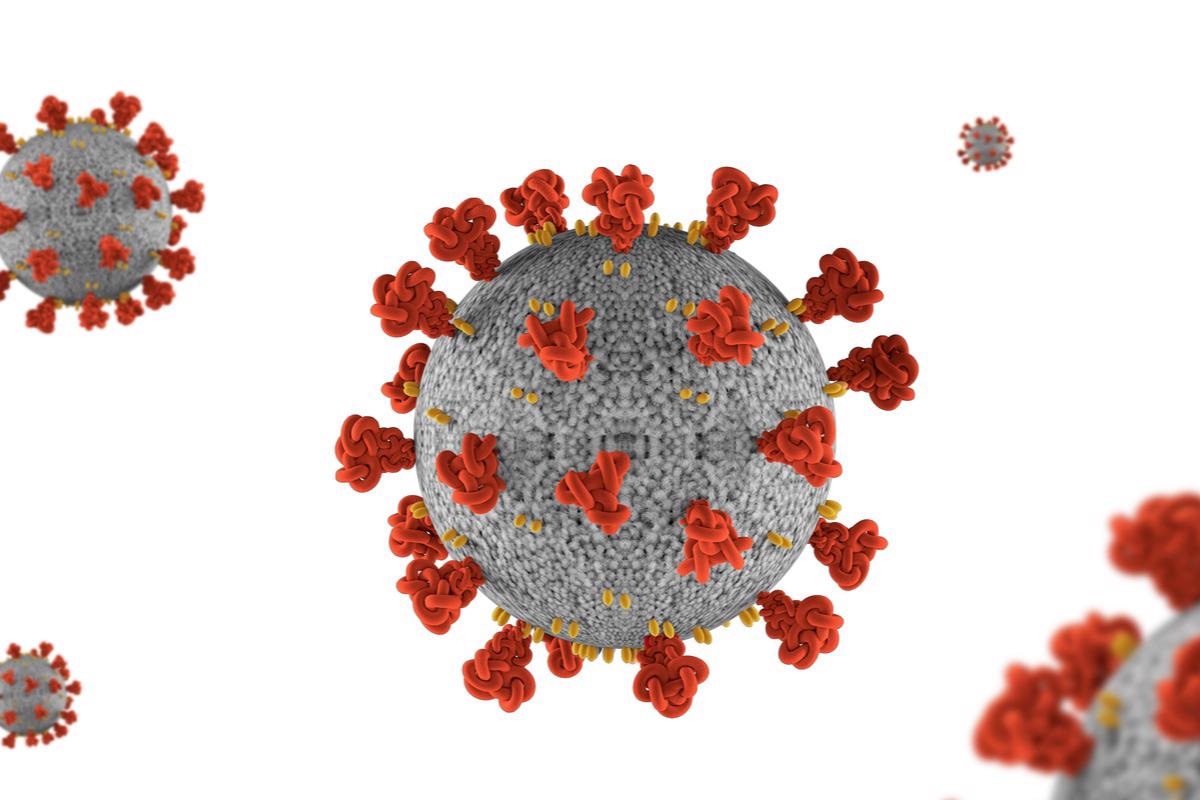New research, led by the Mayo Clinic, suggests that the open reading frame 8 (ORF8) protein is highly expressed in patients with severe coronavirus disease 2019 (COVID-19) infection.
Additionally, ORF8 is found to have specific binding activity with a receptor on CD14+/CD16+ monocytes which induce proinflammatory cytokines.
The findings point to ORF8 as the missing factor that connects the severe acute respiratory syndrome coronavirus 2 (SARS-CoV-2) to symptoms associated with severe infection. Understanding ORF’s role in severe COVID-19 illness may also be the virus’s Achilles heel as researchers try to manipulate it for future treatment strategies.
 Study: Secreted ORF8 is a pathogenic cause of severe Covid-19 and potentially targetable with select NLRP3 inhibitors. Image Credit: GEMINI PRO STUDIO/Shutterstock
Study: Secreted ORF8 is a pathogenic cause of severe Covid-19 and potentially targetable with select NLRP3 inhibitors. Image Credit: GEMINI PRO STUDIO/Shutterstock
The study was recently published on the bioRxiv* preprint server.

 *Important notice: bioRxiv publishes preliminary scientific reports that are not peer-reviewed and, therefore, should not be regarded as conclusive, guide clinical practice/health-related behavior, or treated as established information.
*Important notice: bioRxiv publishes preliminary scientific reports that are not peer-reviewed and, therefore, should not be regarded as conclusive, guide clinical practice/health-related behavior, or treated as established information.
The study
The researchers constructed a SARS-CoV-2 model by infecting HEK293 cells with one of 22 lentiviruses expressing a SARS-CoV-2 protein. Western blotting looking at protein expression confirmed the expression of most viral proteins except for NSP13, ORF10, MEM and NSP4.
Unlike the others, ORF8 was the most expressed protein. Further analysis showed that the other expressed proteins had an unconventional protein secretion signal, but it was ORF8 that had a classic protein signal sequence and a N-link glycosylation site. The findings indicate that ORF8 likely secretes from the classic endoplasmic reticulum/Golgi protein secretion pathway.
ORF8 protein induces inflammatory response seen in SARS-CoV-2 infection
An abundance of the ORF8 protein appears to stimulate the expression of COVID-19 associated proinflammatory cytokines.
The research team found this result after testing human peripheral mononuclear cells from non-infected donors with NSP proteins or ORF8.
After testing cytokine RNA expression, they observed no cytokine expression after cells interacted with NSP proteins. However, ORF8 with CM elicited a 5-fold increase in mRNA expression of several cytokines, including IL1b, IL6, IL8, and CCL2.
Additionally, a test between glycosylated ORF8 and glycosylated ORF8 showed that glycosylation is needed for cytokine induction.
Monocytes are ORF8’s intermediary targets for cytokine expression
In order to produce COVID-19 related cytokines, ORF8 targets monocytes to do its bidding. Specifically, CD14, CD16, CD68, and HLA-DR were enriched when there was increased mRNA expression of cytokine IL1b, IL8, and CCL2.
ORF’s mechanism of action in targeting CD14+/CD16+ relies on the activation of the NLRP3-mediated inflammasome response.
A pathway enrichment analysis confirmed the finding as the SAR-CoV-2 infection pathway was the most enriched pathway in cells. Additionally, parts of the NOD-like receptor signaling subpathway were also enriched.
To learn how the ORF8 glycoprotein initiates NLRP3-mediated inflammasome activation, the researchers studied cells exposed to the ORF8 glycoprotein for two hours to maximize the chances of all ORF8 proteins binding to cell receptors. After washing out any ORF8 proteins that did not bind, they found robust IL1b mRNA expression in all cells that were continuously exposed to ORF8, not just those that were preincubated with ORF8.
The results suggest the ORF8 protein most likely enters monocytes through a non-receptor mediated process such as phagocytosis.
Of the potential surface receptors, only the intracellular NLRP3 receptor was physically bound to the ORF8 binding protein.
High ORF8 protein levels observed in patients with severe COVID-19 illness
The previous experiments confirmed the SARS-CoV-2 ORF8 protein is involved in triggering the production of proinflammatory cytokines in vitro. The next step was to see if the following played out in real-life scenarios as well.
The researchers collected glycosylated blood from patients diagnosed with COVID-19 infection. Western blotting was used to measure protein samples in the serum.
Findings showed that 92% of newly diagnosed patients had detectable ORF8 protein levels. When comparing the sizes of ORF8 proteins, results confirmed patients had glycosylated ORF8 proteins.
While researchers could not determine the exact quantity of ORF8 in the blood, about 4 µl of serum samples had significant levels of the ORF8 protein during COVID-19 infection.
A correlation was observed between ORF8 protein levels and disease severity. Of the 25 hospitalized patients, the seven who died from infection had significantly high ORF8 protein levels.
All patients with low ORF8 protein had mild symptoms, recovered quickly from infection, and no one died.
Administration of the NLRP3 inhibitor MCC950 was successful in inhibiting IL1b production.
Targeting the ORF8/NLRP3 axis is a promising strategy for treating patients with 248 symptomatic Covid-19, an urgent unmet need for the current pandemic,” concluded the research team.

 *Important notice: bioRxiv publishes preliminary scientific reports that are not peer-reviewed and, therefore, should not be regarded as conclusive, guide clinical practice/health-related behavior, or treated as established information.
*Important notice: bioRxiv publishes preliminary scientific reports that are not peer-reviewed and, therefore, should not be regarded as conclusive, guide clinical practice/health-related behavior, or treated as established information.